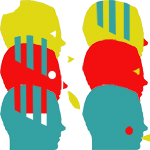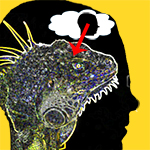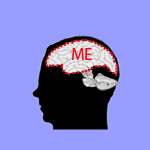 A joke that comes down to us from Epicharmas of Kos, a 5th century BC comic playwright, is made topical by Greece’s debt crisis:
A joke that comes down to us from Epicharmas of Kos, a 5th century BC comic playwright, is made topical by Greece’s debt crisis:
Months after lending Yiannis five euros, Giorgos catches Yiannis’ sleeve in the agora and asks for his money back. “Ah,” says Yiannis, and stoops to gather a handful of pebbles. He arranges them in a pile. “See this pile of pebbles?” Giorgos nods. “If I add two more,” Yiannis continues, demonstrating this, “is it the same pile?”
“Of course not,” says Giorgos.
“And if I take a pebble away, is it the same pile, or different?”
“Different,” says Giorgos. “So what?”
“Ah. A man is made of small things, is he not?”
“Yes,” Giorgos agrees (being a thoroughgoing physicalist).
“Well, then!” says Yiannis with a Hellenic shrug. “Many days have passed, during which the man to whom you lent those five euros consumed many small things, and excreted others, and, therefore, no longer exists. I’m not responsible for his debts.”
“I get it,” says Giorgos, and punches Yiannis in the face.
Rubbing his bruised cheek, Yiannis complains,“Why did you do that?”
“Me?” says Giorgos. “That wasn’t me.”
The joke works because we know the criterion of personal identity to which both characters appeal is bogus. A person’s identity is not like that of a collection of pebbles. Being responsible for promises and past actions is part of being the same person over time, despite gains and losses of matter, and other changes. But if we, like Yiannis and Giorgos, deny that being the same person consists in the abiding presence of some sort of immaterial substance, it is incumbent on us to give some account of the sameness of persons over time. What is the unifying principle of personhood which makes it true that, for example, Barack Obama, the 44th President of the United States is the same person as the Barack Obama who was born at the Kapi’olani Maternity Hospital in Honolulu on Aug. 4th, 1961, and the Barack Obama who directed the Developing Communities Project in Chicago’s South Side in 1986—and different from everybody else? Continue reading “The Unity of Persons”
 I like Ian Brown’s birthday pieces—about turning 55 in 2009, now 60 in Feb 8th’s Globe and Mail—because they so eloquently express the feelings that come naturally to people on their birthdays, starting around age 30: the sense of time running out, the vision of one’s remaining life as a diminishing resource, the fear that its quality will deteriorate. He writes:
I like Ian Brown’s birthday pieces—about turning 55 in 2009, now 60 in Feb 8th’s Globe and Mail—because they so eloquently express the feelings that come naturally to people on their birthdays, starting around age 30: the sense of time running out, the vision of one’s remaining life as a diminishing resource, the fear that its quality will deteriorate. He writes:








